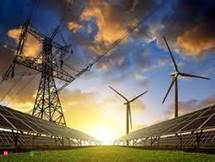GREEN OPEN ACCESS RULES, 2022

Copyright infringement not intended
Context:
- In order to further accelerate our ambitious renewable energy programmes, with the end goal of ensuring access to affordable, reliable, sustainable and green energy for all, Green Open Access Rules, 2022 have been notified on 06.06.22.
Details:
- These rules are notified for promoting generation, purchase and consumption of green energy including the energy from Waste-to-Energy plants.
- The notified Rules enable simplified procedure for the open access to green power. It will enable faster approval of Green OA, Uniform Banking, Voluntary purchase of RE power by commercial & industrial consumers, Applicability of OA charges etc.
- Commercial and Industrial consumers are allowed to purchase green power on voluntarily basis.
- Captive Consumers can take power under Green Open Access with no minimum limitation.
- Discom Consumers can demand for supply of Green power to them.
The salient features of the Rules are as under:
- The Green Open access is allowed to any consumer and the limit of Open Access Transaction has been reduced from 1 MW to 100 kW for green energy, to enable small consumers also to purchase renewable power through open access.
- Provide certainty on open access charges to be levied on Green Energy Open Access Consumers which includes transmission charges, wheeling charges, cross-subsidy surcharge and standby charges. Cap on increasing of cross-subsidy surcharge as well as the removal of additional surcharge, not only incentivise the consumers to go green but also address the issues that have hindered the growth of open access in India.
- Transparency in the approval process of the open access application. Approval to be granted in 15 days or else it will be deemed to have been approved subject to fulfilment of technical requirements. It will be through a national portal.
- Determination of green tariff: The tariff for the green energy shall be determined separately by the Appropriate Commission, which shall comprise of the average pooled power purchase cost of the renewable energy, cross-subsidy charges if any, and service charges covering the prudent cost of the distribution licensee for providing the green energy to the consumers.
- The Rules will help to streamlining the overall approval process for granting Open Access including timely approval, to improve predictability of cash flows for renewable power producers. It will also bring
- Uniformity in the application procedure.
- Banking of surplus green energy with the distribution licensee mandated.
- There shall be a uniform renewable purchase obligation, on all obligated entities in area of a distribution licensees. It has also included the Green Hydrogen/Green Ammonia for fulfilment of its RPO.
- Consumers will be given the green certificates if they consume green power.
- Cross subsidy surcharge and additional surcharge shall not be applicable if green energy is utilized for production of green hydrogen and green ammonia.
India at COP 26:
- India has presented the following five nectar elements (Panchamrit) of India’s climate action:
- Reach 500 GW Non-fossil energy capacity by 2030.
- 50 per cent of its energy requirements from renewable energy by 2030.
- Reduction of total projected carbon emissions by one billion tonnes from now to 2030.
- Reduction of the carbon intensity of the economy by 45 per cent by 2030, over 2005 levels.
- Achieving the target of net zero emissions by 2070.
- The mantra of LIFE- Lifestyle for Environment to combat climate change was also shared in COP 26.
- India has also pledged to become a ‘net zero’ carbon emitter by 2070, and announced enhanced targets for renewable energy deployment and reduction in carbon emissions.
India at COP 21:
- India pledged to reduce emissions intensity per unit GDP by 33-35% of 2005 levels
- Aiming to reach 40% of installed capacity from non-fossil fuels.
- Targeting 175 GW of renewable energy generation by 2022.
- Planning to enlarge forest cover to absorb 2.5 Billion tonnes worth of carbon dioxide.
- Reducing dependence on fossil fuels through levies and reduction in subsidies.
- India exhorted on the principles of equity and differentiated responsibilities
https://www.pib.gov.in/PressReleasePage.aspx?PRID=1831832



1.png)
